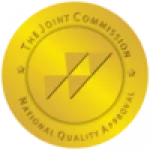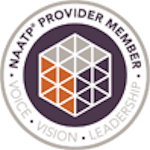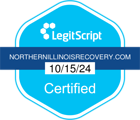
Opioid Overdose in Illinois
In 2020, Illinois saw an alarming spike in opioid-related overdoses and deaths. According to the Illinois Department of Public Health, there were more than 2,900 opioid-related overdose deaths across the state in 2020 alone. This represents a 33% increase when compared to 2019 figures. In addition, synthetic opioid deaths have increased by 80% since 2013.
Though opioid addiction affects people from all backgrounds, research shows that it disproportionately impacts communities of color and males. From 2019 to 2020, black and Hispanic populations accounted for five times the number of hospital visits related to opioids vs white or non-hispanic populations. In addition to that, men made up 72.4% of all opioid overdose ER visits.
How Illinois Responded
The State of Illinois responded by launching a plan on September 6th, 2017 to reduce opioid abuse and save lives called the “State Opioid Action Plan” (or SOAP for short). The overall goal of this plan was to reduce opioid deaths by 33% in three years. It included initiatives like expanding access to treatment, improving access to naloxone (a life-saving opioid overdose reversal agent), and working with healthcare providers and community organizations.
Unfortunately, as statistics have shown the crisis only got worse before it got better. However, since 2014 over 54,000 first responders have trained on how to use Naloxone, and more than 70,000 doses have been administered. The state has also made progress by expanding medication-assisted treatment access across counties that did not have prescribers. From June 2018 to June 2019, 15 counties gained at least one prescriber.
Sadly, as 2021 data began to be collected it was clear the initiatives have not yet gone far enough. According to the Illinois Department of Public Health 2021 opioid overdose deaths had risen to 3,013, which shows a 2.3% increase from 2020. The only positive sign is that the rate of growth has slowed from 33% from 2019 to 2020, to now 2.3% from 2020 to 2021. It’s clear that the state of Illinois still has some work to do.
What You Can Do for a Loved One Struggling with Opioid Use Disorder
If you think a loved one is struggling with opioid use disorder, the first step is to look for signs of addiction. Signs can include: increased tolerance (needing more opioids to get the same effect), changes in behavior and mood, financial difficulties related to obtaining opioids, using more than prescribed or combining opioids with other drugs/alcohol, and experiencing withdrawal symptoms when unable to access them.
Other common signs of opioid abuse include extreme fatigue, shallow breathing, confusion or disorientation, slurred speech, loss of coordination or balance problems, constricted pupils, and nausea. If you are concerned that your loved one may be abusing opioids it’s important to talk about it openly and let them know that help is available.
You can also purchase Naloxone at a local pharmacy. The medication is used to treat opioid overdose and can be administered if someone experiences an opioid-related emergency. It’s available without a prescription.
When individuals are ready to receive help for opioid addiction, various treatment options are available. In Illinois, the Department of Human Services (DHS) provides services to help people with substance use disorders get well. This includes providing financial assistance for detox, and residential and outpatient treatment. There is also a Substance Use Helpline that connects callers to local resources such as hotlines, support groups, and much more.
If you or somebody you know needs help for opioid addiction or overdoses it’s important to seek help immediately — there is no shame in asking for assistance! You can find more information about opioid addiction on our website or by contacting us directly. At Northern Illinois Recovery Center, we are dedicated to helping the state reverse these troubling trends.




